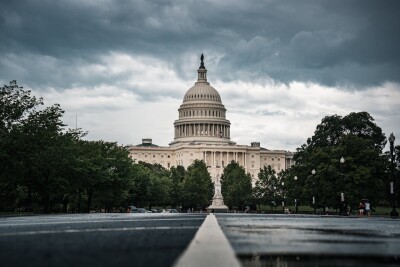The FAA Reauthorization Act of 2018 was truly a watershed moment for the drone industry as a whole. Not only did it establish who’s responsible for enforcing drone laws and define privacy for citizens, but it also signaled the repeal of Section 336, which gave the FAA the right to regulate model aircraft. It’s a development that many had been calling for, as being able to open up the sky for broadly approved and expanded drone operations like flights over people and beyond visual line of sight were limited because of this carve out. Now everyone will be forced to be more professional and more like aviators and risk management professionals.
That hobbyist carve out contributed greatly to what many called the “Wild West” of the airspace, wherein anyone could take to the sky so long as they could claim their operation was non-commercial. While the majority of true hobbyists were and are responsible fliers, the inability to ensure compliance hampered the technology in numerous ways that will soon be completely eliminated.“2019 is the beginning of the end of a vacuum of compliance and enforcement that previously existed around the industry,” said Andrew Elefant, Director of Policy at Kittyhawk. “We're rapidly moving to a place where everyone will be operating under the same rules of the road and there will be less differentiation between commercial and recreational operators. This debate was brewing for a while, and now that the FAA has more regulatory certainty, it's moving quickly to increase transparency and compliance with the ultimate goal of safe integration of all drones into the national airspace."This new understanding of compliance is ultimately tied back into issues of registration and identification, which is why so many have advocated for Remote ID. A recent whitepaper from Kittyhawk explains as a digital license plate for drones, although the question of “who’s operating that drone?” is at the core of this system. Ultimately, Remote ID provides this answer and helps to serve as a mechanism for holding people accountable in case of an incident. This new understanding of compliance is one that ensures everyone will be accountable.“As more drone operators become integrated into the greater aviation community, everyone is going to need to address compliance and transparency issues in a more robust manner,” Elefant told Commercial UAV News. “It's no longer a topic just for some commercial operators who want to do things the right way. Remote ID, LAANC, and other technological methods of increasing compliance and transparency will affect everyone. This changes expectations for other operators around everything from knowledge tests to authorization for operations in controlled airspace. For some drone operations, training and maintenance will be part of it as well, all of which contributes to the professionalization of the national airspace that will allow drone technology to scale."This understanding is one that’s happening at multiple levels, as more and more individuals and organizations are recognizing that they're part of the bigger national airspace system and that whether they like it or not, they need to operate safely in it. Conversations about what that can actually look like are already happening, as more and more company stakeholders know they need to get it right from the start. They don’t want to be in the headlines for the wrong reasons, and compliance will enable them to make sure they’re not only operating safely but that they’ll be protected from issues like a data breach.“Compliance related to all the data being collected by drone operations is somewhat related to Remote ID in that as more data can be tracked and collected, compliance becomes a higher priority,” Elefant explained. “There is going to be even more of a compliance journey for certain operations, especially those dealing with sensitive data and industries. How they comply with a variety of federal, state, and industry-specific laws regarding data privacy and data protection is also on this new frontier of compliance for drone operations."As the complexity of some operations have increased, so too has the desire to ensure that what someone is doing that day or that week is in compliance for the entire duration of a flight. Some organizations have adjusted their settings to the degree that if the pilot cannot pre-determine they're in full compliance, then there is no flight. Compliance is that important for an increasing amount of company stakeholders.“Aviation safety culture is permeating everything,” Elefant said. “It's no longer enough for an operator to glance at a few things and think they're fine to fly a given operation. We are seeing policies and procedures being developed to make sure there is no wiggle room or room for interpretation. Enterprise drone program managers want to know their fleet and operators are being compliant 100% of the time."It’s rare to hear an FAA official talk about drones without talking about safety, and this new expectation around compliance underscores how they’ve made doing so a priority for the industry as a whole. The FAA Reauthorization in October 2018 has directly impacted all of the rulemaking and integrating going on right now, and the hope is that by late 2019 or early 2020, all recreational fliers will be integrated into the NAS and controlled airspace via LAANC, ADS-B from manned aircraft, and near-universal Remote ID.Transparency, professionalism, and compliance are now top priorities, increasing safety and efficiency of the NAS using new technology to address new issues. Because of this change, a new expectation around compliance has been enacted to enable growth in a way that it never could during the “Wild West” era of the technology.Subscribe
The information you submit will be stored and used to communicate with you about your interest in Commercial UAV News. To understand more about how we use and store information, please refer to our privacy policy.
June 4, 2019
Signaling the End of the "Wild West" for Drones in the Airspace
















Comments